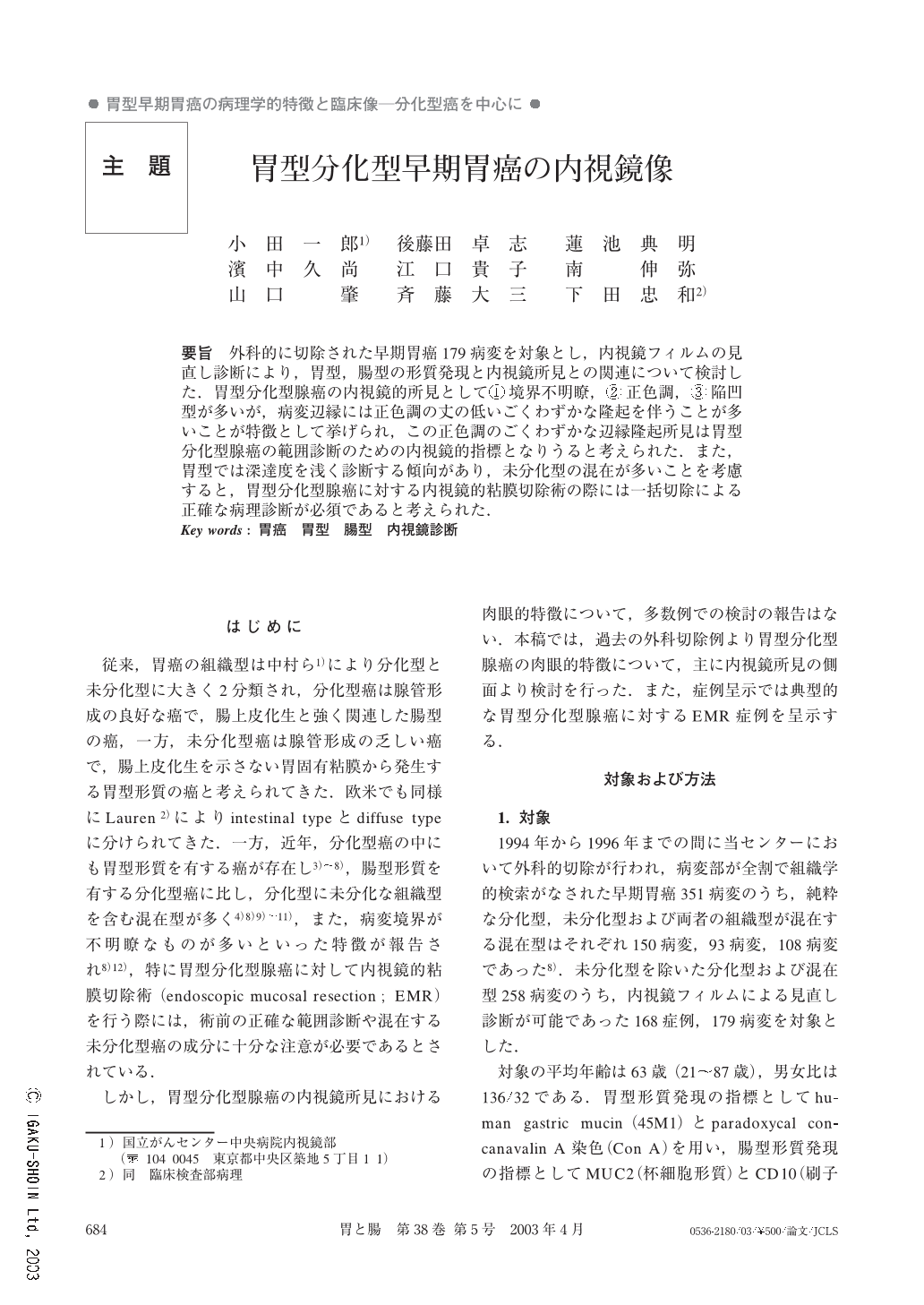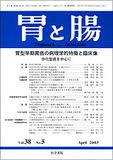Japanese
English
- 有料閲覧
- Abstract 文献概要
- 1ページ目 Look Inside
- 参考文献 Reference
- サイト内被引用 Cited by
要旨 外科的に切除された早期胃癌179病変を対象とし,内視鏡フィルムの見直し診断により,胃型,腸型の形質発現と内視鏡所見との関連について検討した.胃型分化型腺癌の内視鏡的所見として①境界不明瞭,②正色調,③陥凹型が多いが,病変辺縁には正色調の丈の低いごくわずかな隆起を伴うことが多いことが特徴として挙げられ,この正色調のごくわずかな辺縁隆起所見は胃型分化型腺癌の範囲診断のための内視鏡的指標となりうると考えられた.また,胃型では深達度を浅く診断する傾向があり,未分化型の混在が多いことを考慮すると,胃型分化型腺癌に対する内視鏡的粘膜切除術の際には一括切除による正確な病理診断が必須であると考えられた.
Endoscopic mucosal resection (EMR) for differentiated-type intramucosal carcinoma of the stomach has been widely accepted. Traditionally, most differentiated-type gastric carcinomas (DGA) have been considered to be intestinal type by Lauren's classification and their histogenesis is thought to be associated with intestinal metaplasia. Recently, among DGA, the gastric phenotype expression has been demonstrated by mucin histochemical and immunohistochemical analysis. It has been reported that DGA with gastric phenotype often has an undifferentiated component, histologically. However, endoscopic features of DGA with gastric phenotype have been reported in a few cases. In this study, we reviewed the endoscopic features of 168 patients with early DGA who underwent gastrectomy at the National Cancer Center Hospital beween 1994 and 1996. Cases were divided into four mucin phenotypes according to the expression of mucin histochemical and immunohistochemical staining ; gastric mucin phenotype (G type,45 lesions), intestinal mucin phenotype (I type, 33 lesions), mucin phenotype combined with both gastric and intestinal mucin (G-I type, 90 lesions), and non-mucin type (LOM, 11 lesions).
Macroscopically, a significant number of the G-type lesions showed an unclear margin (25/45 ; 55.6 %) and normal color (24/45, 53.3%) in contrast to the G-I type (19/90 ; 21.1%, 19/90 ; 21.1%) and I type (3/33 ; 9.1 %, 6/33 ; 18.2%). Depressed type (IIc) was more frequent among all groups, and elevated and depressed type (IIa+IIc) were found more frequently in the G type (14/45 ; 31.1 %) than in the G-I type (12/90 ; 13.3%) and I type (3/33 ; 9.1%). The accuracy rate of endoscopic diagnosis concerning the depth of invasion for intramucosal cancer is lower in the G type (73.9%) and G-I type (74.1%) than in the I type (95.0%).
These results suggest that, when deciding the indication for EMR, we should keep in mind the characteristics of G type DGA such as its high rate of having an undifferentiated component, unclear margin and low accuracy rate in the endoscopic diagnosis of depth of invasion.

Copyright © 2003, Igaku-Shoin Ltd. All rights reserved.


